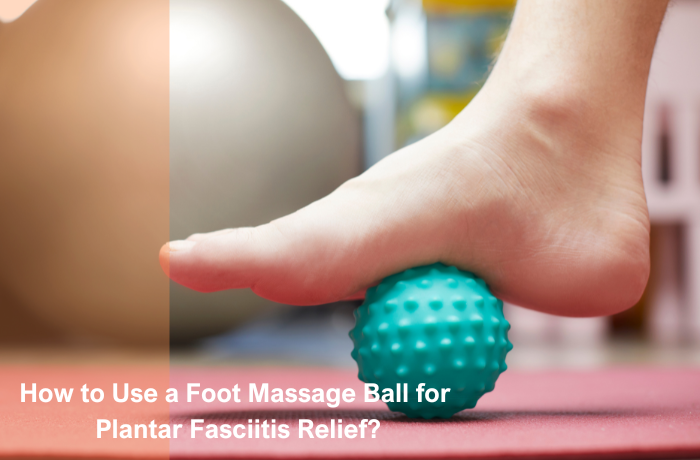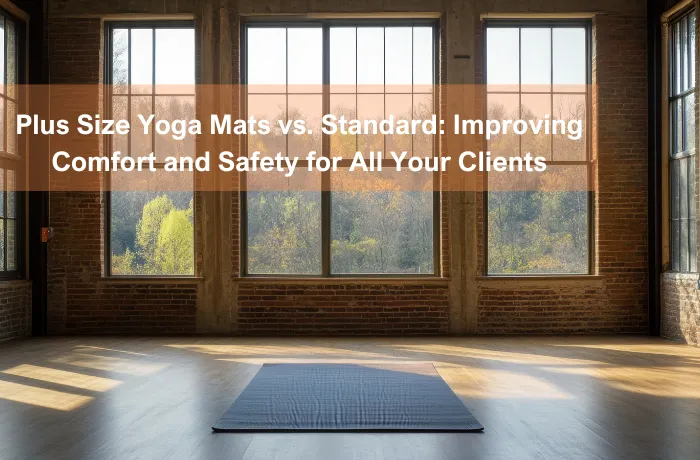You can use a foot massage ball for plantar fasciitis relief by placing it under your foot and gently rolling from the ball of your foot to your heel. This simple self massage technique can help ease discomfort and boost foot mobility. Try it while sitting or standing, and adjust the pressure to what feels good. Although some studies show mixed results for foot massage balls, many people still enjoy the soothing benefits of foot massage in their daily routine. If you want to know how to use a massage ball, start slow and listen to your body.
Key Takeaways
- Roll a foot massage ball under your foot slowly. Move it from the ball of your foot to your heel. This can help with plantar fasciitis pain.
- Pick a massage ball that feels good for you. Softer balls are better for sensitive feet. Firmer balls can help more if you need deeper relief.
- Begin with light pressure and keep sessions short. Pay attention to your body. Stop if you feel pain or discomfort during the massage.
- Use foot massage along with stretching, good shoes, and rest. This helps lower foot pain and makes it easier to move.
- Try hot and cold therapy with your massage. This can help swelling go down. It also relaxes muscles and helps your foot heal from plantar fasciitis.
What Is Plantar Fasciitis?
Causes and Symptoms
Plantar fasciitis is a main reason for foot pain and foot arch pain. You might feel it most when you get up in the morning or after sitting for a long time. The pain is usually sharp near your heel and can move along the bottom of your foot. Sometimes, you may also notice your Achilles tendon feels tight, swollen, or stiff.
There are many reasons people get plantar fasciitis. Standing for a long time, playing sports, or working out on hard floors can raise your risk. Wearing shoes that do not support your feet or walking barefoot can make it worse. People with high arches, flat feet, or who weigh more are more likely to get plantar fasciitis. Young women who wear high heels can also get foot arch pain and plantar fasciitis.
Here’s a simple chart showing who gets plantar fasciitis most often:
| Population Group | Prevalence / Incidence Rate | Additional Notes |
|---|---|---|
| US Military | 10.5 per 1000 person-years (unadjusted incidence) | Women have a higher adjusted incidence rate ratio of 1.96 compared to men (95% CI: 1.94–1.99). |
| US Adult Population | 1.19% in women, 0.47% in men | Higher prevalence in ages 45-64 (1.33%) vs 18-44 (0.53%); obesity increases prevalence (1.48%). |
| Young Females in Pakistan | 6% diagnosed with plantar fasciitis among those with heel pain wearing high heels | Study highlights association with high heel use and heel pain symptoms. |
| US Military (Race Factor) | Adjusted incidence rate ratio 1.12 for black vs white service members (95% CI: 1.09–1.12) | Indicates racial differences in incidence rates. |
| Saudi Security Forces | 1.18% prevalence among patients with heel pain | Obesity and improper footwear identified as risk factors. |
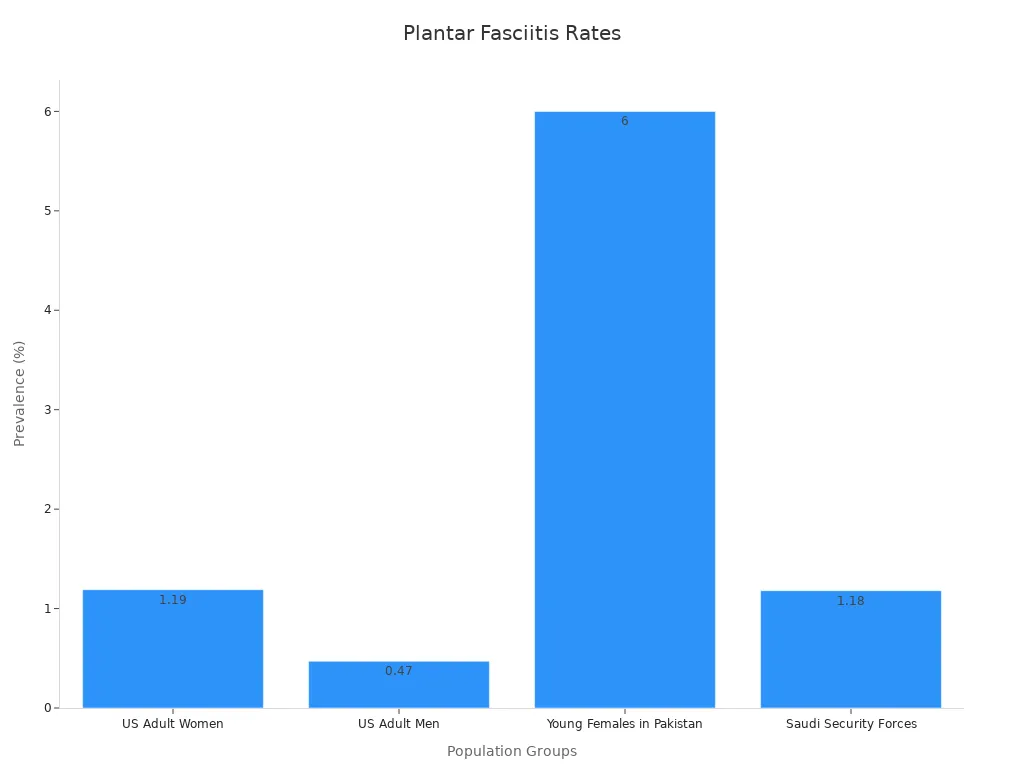
Tip: If your foot arch hurts or your foot hurts more after standing or walking, you could have plantar fasciitis. Pay attention to when the pain starts and what helps or makes it worse.
Why Massage Helps?
Massage can really help if you have plantar fasciitis. Using a massage ball can break up scar tissue and help blood move better in your foot. This can lower pain and help your foot heal faster. Massage also makes your foot tissues more stretchy, which can ease foot arch pain and help you move better.
Some studies say different massage styles, like deep tissue massage and trigger point therapy, can help with plantar fasciitis. These massages relax tight muscles, make tissues more stretchy, and help your body make endorphins, which help with pain. Doing massage often can also stop new injuries by keeping your foot strong and flexible.
If you add massage to your daily habits, you might feel less foot pain and more comfort when you walk. Many people find that using massage, stretching, and wearing good shoes works best for plantar fasciitis.
Choosing a Foot Massage Ball
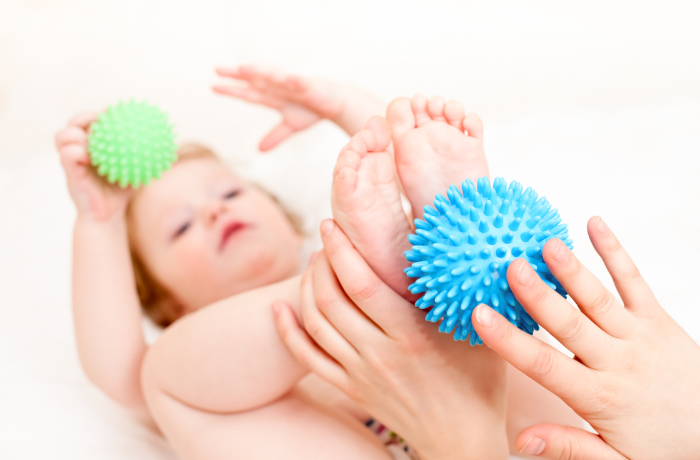
Types and Features
Picking the right foot massage ball can make a big difference in your comfort and results. You have lots of choices, so it helps to know what each type offers. Here’s a quick look at some popular options:
| Type | Size | Firmness | Texture | Best For |
|---|---|---|---|---|
| Lacrosse Ball | ~2.6 in | Firm | Smooth | Deep massage, foot arches |
| ProStretch Roundchucks | ~2.7 in | Softer, squishy | Smooth | Gentle pressure, sensitive feet |
| Lululemon Release and Recover Set | 1.75–2.7 in | Varies | Spiky/Rippled | Custom intensity, different muscle groups |
| Tennis Ball | N/A | Soft | Smooth | Light massage, beginners |
| Golf Ball | Very small | Very firm | Smooth | Pinpoint, intense spots |
You might notice that some balls feel firmer or softer. A firmer ball, like a lacrosse ball, works well for deep tissue massage. Softer balls, such as the ProStretch, give you a gentler touch. Some sets, like the Lululemon Release and Recover, offer different sizes and textures, so you can pick what feels best for you.
Experts suggest looking for a foot massage ball with good grip, so it won’t slip when you roll your foot. You also want a size that fits your foot comfortably. Many people like sets that include more than one ball, so you can try different shapes and firmness levels. If you want the best value, check out sets that offer multiple tools in one package.
Tip: Try a few types to see which one feels best on your feet. Customizing your massage helps you get the most relief.
Tips for Sensitive Feet
If your feet feel tender or sore, you don’t have to skip using a foot massage ball. Start with a softer ball, like a tennis ball or a squishy silicone ball. These give you a gentle massage without too much pressure. You can also wear socks to soften the feeling even more.
Begin with light pressure and short sessions. Sit down and let your foot rest on the ball, then slowly roll it back and forth. If you find a sore spot, pause and breathe for a few seconds. Don’t push too hard—let your foot get used to the feeling.
Some people like to use a ball with a textured surface for extra relief, but if your feet are very sensitive, stick with smooth surfaces at first. Over time, your feet may get used to the massage, and you can try firmer or spikier balls if you want.
Remember, you control the pressure. Listen to your body and stop if anything feels too intense.
How to Use a Foot Massage Ball?
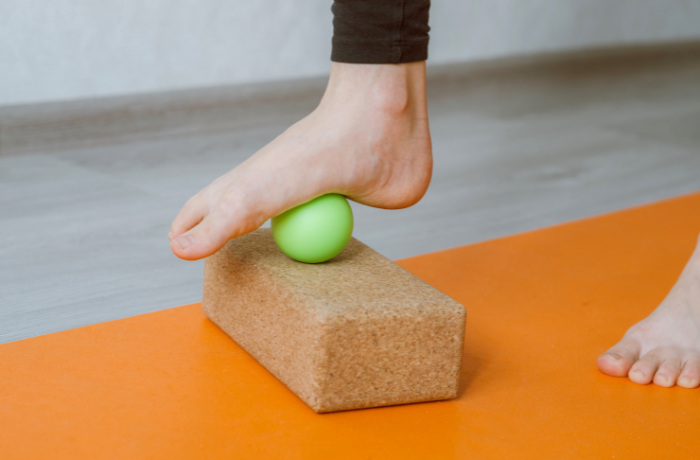
Seated and Standing Positions
You can use a foot massage ball while sitting or standing. Both positions work well for plantar fasciitis relief, so pick the one that feels safest and most comfortable for you. Here’s a simple step-by-step guide for each:
Seated Position:
- Sit on a sturdy chair with your feet flat on the floor.
- Place the massage ball under one foot, right in the middle of your arch.
- Start by wiggling your toes and rolling your ankle to warm up your foot.
- Gently roll the ball from the ball of your foot to your heel. Move slowly and cover the whole bottom of your foot.
- Roll the ball along the inside and outside edges of your foot to reach different areas.
- If you find a sore spot, pause and use gentle pressure for a few seconds.
- Switch to the other foot and repeat.
Standing Position:
- Stand near a wall or chair for balance.
- Place the massage ball under your foot.
- Slowly roll the ball back and forth, from the ball of your foot to your heel.
- To reduce pressure, bend your knee a little and shift your weight to your other leg.
- Roll along the inner and outer edges of your foot.
- Adjust your body weight to control how much pressure you feel.
- Spend about one minute on each foot.
Tip: If you’re new to self massage, start seated. When you feel ready, try standing for a deeper massage.
Rolling Technique and Pressure
When you self-massage your plantar fascia, focus on slow, steady movements. Roll the ball from the ball of your foot to your heel, making sure to cover the arch and the sides. If you find a tender spot, pause and use gentle pressure for a few seconds. This helps release tightness and can ease pain from plantar fasciitis.
You control the pressure. If your feet feel sensitive, use less body weight or wear socks to soften the feeling. For a deeper massage, press down a little more, but never push so hard that you feel sharp pain. The goal is to feel relief, not discomfort.
Try making small circles with the ball under your heel or arch. You can also roll side-to-side under the base of your toes. These self-massage techniques help target different parts of your foot and boost blood flow.
Note: If you want extra relief, use a frozen massage ball or even a frozen water bottle. The cold can help reduce swelling and soothe sore spots.
Duration and Frequency
For the best results with plantar fasciitis, aim to roll each foot for 2 to 3 minutes. You can do this once or twice a day. Some people find that starting in the morning helps loosen up their feet before walking. Others like to use the ball after work or exercise.
Research shows that longer sessions may help at first, but most people get good results with short, daily self massage. After a few weeks, you can keep up with 5 to 10 minutes a day, focusing on both feet if needed. Always listen to your body and adjust the time if you feel any discomfort.
Pro Tip: Combine your foot massage with gentle stretching for even better results. Stretch your calves and toes after you finish rolling. This helps keep your feet flexible and strong.
If you want to know how to use a massage ball for plantar fasciitis, remember to stay consistent. Make self massage part of your daily routine. Over time, you’ll notice less pain and better movement in your feet.
Plantar Fasciitis Relief Tips
Safe Massage Practices
You want to get the most out of massaging the feet, but safety comes first. Always start with gentle pressure, especially if you feel sore or new to self massage. Never press so hard that you feel sharp pain. If you notice a tender spot, pause and breathe, then roll gently over it. Try to massage both feet, even if only one hurts. This helps keep your body balanced and can speed up heel pain relief.
Tip: Listen to your body. If you feel more pain after a session, take a break or use less pressure next time.
Hot and Cold Therapy
Hot and cold therapy can boost your plantar fasciitis relief routine. Cold therapy, like rolling a frozen water bottle under your foot, helps reduce swelling and gives quick heel pain relief. One study found that using cold at night made the plantar fascia thinner and cut pain almost in half. Heat therapy, such as a warm towel or heating pad, relaxes your muscles and makes your foot more flexible. This can help you stretch better and reduce tension and pain. Many people find that using heat before stretching and cold after activity works best.
- Cold therapy shrinks swelling and eases pain fast.
- Heat therapy loosens tight muscles and helps with stiffness.
- Using both can make your self massage even more effective.
Supportive Footwear and Rest
The shoes you wear matter a lot for heel pain relief. Supportive shoes with good arch support, a firm heel, and soft cushioning take pressure off your feet. Orthotic insoles or heel pads can also help. Studies show that people who wear shoes with little support or very high heels have worse pain. Rest is just as important. Give your feet a break from long walks or standing. Many people say that resting and changing shoes made the biggest difference for their plantar fasciitis. If your pain does not get better after a few weeks, or if it gets worse, talk to a doctor or foot specialist.
| Footwear Feature | Benefit for Plantar Fasciitis |
|---|---|
| Arch support | Reduces strain on fascia |
| Cushioned sole | Absorbs shock, eases pain |
| Firm heel counter | Improves stability |
| Orthotic insoles | Custom support, better fit |
You can take charge of your foot health with a few simple steps. Start by rolling a massage ball under your foot each day. Add these habits to your routine for even better results:
- Wash and dry your feet daily.
- Stretch and strengthen your feet and ankles.
- Wear shoes with good support.
- Check your feet for changes.
- Ask a healthcare provider for advice if pain sticks around.
Stay consistent and keep caring for your feet. You’ve got this! 👣
FAQ
How often should you do self massage for plantar fasciitis relief?
You can try self massage once or twice a day. Many people like to do it in the morning and again before bed. This routine helps you feel less foot pain and keeps your feet flexible.
Can massaging the feet make heel pain worse?
If you use too much pressure, you might feel more heel pain. Always start with gentle pressure for a few seconds. Listen to your body. If you feel sharp pain, stop and rest your foot.
What if you have foot arch pain after using self-massage techniques?
Sometimes, your foot may feel sore after you self-massage your plantar fascia. This is normal if you use gentle pressure. If the pain gets worse or lasts longer, take a break and try again later.
Do you need special tools for foot massage?
You do not need fancy tools for foot massage. A tennis ball or a frozen water bottle works well. These simple items help reduce tension and pain and give you easy heel pain relief at home.

